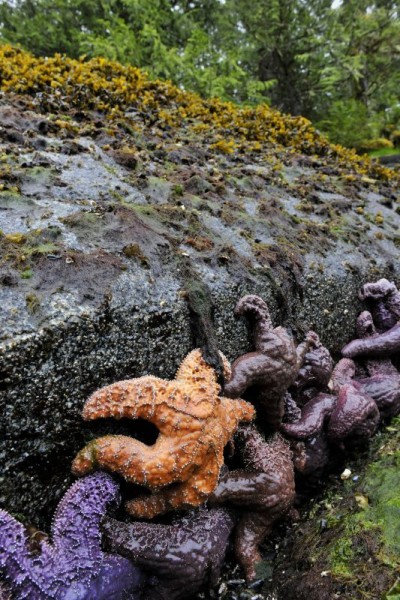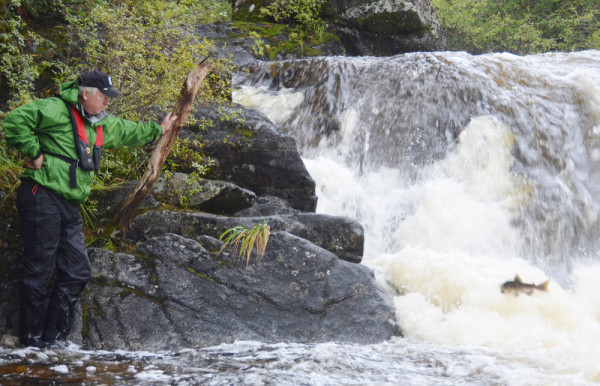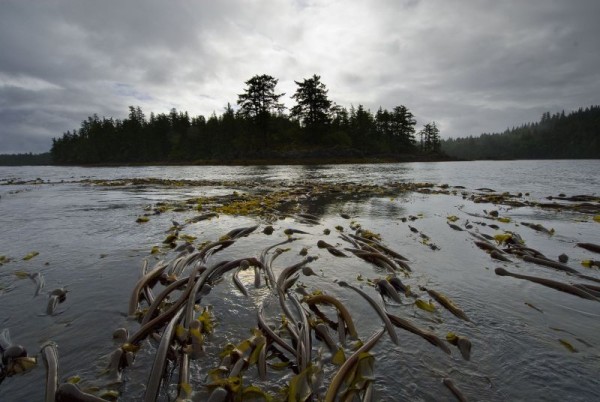Tanker ban will help safeguard B.C.’s north coast, but marine management plans need attention now.
During my first visit to British Columbia’s north coast, I was immediately struck by the area’s extraordinary natural wealth. It’s a place renowned for its rich ocean habitats, temperate rain forests as well as humpback whales, bears, salmon and orca. It’s also very important for people, and provides 10,000 jobs and up to $1.2 billion in total economic output each year from sustainable ocean-based industries alone. Most importantly, the region is well known for its strong cultural connections with First Nations who have inhabited and cared for the ecosystems within it for millennia.

We refer to this region as the Great Bear Sea. It is truly one of this country’s most vibrant ecosystems, a place millions of Canadians have stood up for as Enbridge developed its Northern Gateway Pipeline and tanker project.
The Great Bear is no place for a pipeline: as over 300 scientists from across Canada have stated, the risk of a spill is just too high. So high that on Friday, November 13, 2015, Canadian Prime Minister Justin Trudeau released a mandate letter that seeks to place a moratorium on oil tanker traffic off B.C.’s north coast. This announcement is significant, not only because it will make life safer for the salmon, whales and people that call the area home, but also because it marks the end of the pipeline project as we know it.
Without the proposed 225 tankers a year moving through Kitimat’s Douglas Channel – as well as the Dixon Entrance, Hecate Strait, and Queen Charlotte Sound – there will be no chance of diluted bitumen spilling into these highly productive waters.

The moratorium is something to celebrate, and puts a major hurdle in front of Enbridge’s plans for the region. However, in the wake of the decision, the company indicated that it still has every intention of proceeding with its Northern Gateway pipeline plan.
It’s now crucial that we push towards the next stage: a legislated ban on all oil tanker traffic in the region. This is the best way to help secure a sustainable future for the many communities and species that depend on its resources for survival – and a future in which Canada looks to a variety of different renewable energy resources to power its growth.
We can already see the momentum building. Behind the moratorium are other important commitments voiced by the new Government of Canada, including the re-establishment of comprehensive environmental assessments, and an over-arching goal to meet international commitments to increase marine and coastal protection from 1.3 per cent to 5 per cent by 2017, and 10 per cent by 2020.
These goals, as well as a commitment to work closer with provinces, Indigenous Peoples, and other affected groups to effectively co-manage our oceans, show real ambition and are attainable if we commit to working together.

For B.C.’s north coast, there is already a strong framework and building block that can help the federal government reach some of these goals. Earlier this year, the province of British Columbia signed the Marine Planning Partnership (MaPP), an agreement with 18 Coastal First Nations that integrates the management of 102,000 km2 of ocean environment. MaPP moves away from traditional sector-by-sector management by considering the combined effects human activity has on marine ecosystems, and how to keep them healthy. The MaPP plans are premised in Ecosystem Based Management (EBM) and integrate human well-being, ecological integrity and governance. Even better, underlying the entire MaPP agreement is the protection of biodiversity.
These plans have the reach to manage areas and issues where the provincial government has legal jurisdiction and regulatory authority, but not activities and areas under federal jurisdiction.
This is the right moment for the federal government, which manages shipping and commercial fishing with a traditional sector-by-sector approach, to learn from the example the MaPP agreement has set and to work together with B.C. and First Nations groups to meet its own Federal mandate for integrated management under the Oceans Act.

The building blocks are in place. For instance, many of MaPP’s Protected Management Zones have been developed with robust science as well as local and traditional knowledge to protect key ecological values. The same zones are held to a standard that will allow them to be candidates for inclusion into a network of federally-legislated Marine Protected Areas.
Prime Minister Trudeau has the support of Canadians when it comes to protecting B.C.’s north coast from oil tankers. He’ll also find similar backing on initiatives to protect other culturally and ecologically important sites across the country. But to ensure they are a success, ambitious and collaborative long-term planning is key. We’ve already shown that we have the will. Now we need to prove we have the way.
